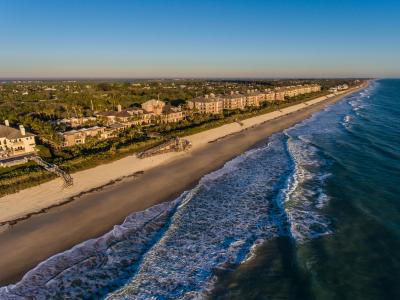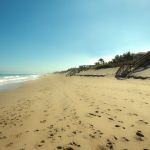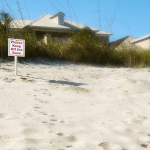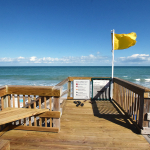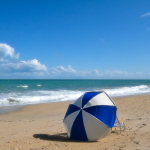Beach, Dunes and Shore
The Town of Orchid is part of Florida's famous Treasure Coast along the Atlantic Ocean. And certainly Orchid's beautiful and pristine beach is a treasure indeed; not only to our residents, but also to our annual visitors, the sea turtles. The Town is committed to protecting this wonderful, natural resource for all who enjoy it. In turn, the dune system along the coast in Orchid is protective to public health and safety, so this is an important relationship.
Protective Dunes
The State of Florida has strict laws that protect its fragile dune system. Though the dunes in Orchid may look robust, they are not impervious to even small-scale damage. It is very important that dunes are not disturbed. For this reason, please keep the following in mind:
- Only access the beach via the available dune crossovers in Orchid; do not walk or climb on the dunes.
- Keep pets off the dunes at all times.
- Burrowing into the dune is not only detrimental to the dune's structure, but can be dangerous for the burrower due to the hazard of dune collapse.
- The vegetation on the dunes is protected flora because it mitigates erosion of dune sand and even helps the dunes accrete; vegetation should not be disturbed or removed.
Unguarded Beach
The beach in Orchid is not life guard protected. The Orchid Island Golf and Beach Club uses the Florida Uniform Warning Flag System at its main beach access to advise beach-goers of coastal and surf conditions. See an example image below in the slideshow. Be aware that the tide and surf conditions can change rapidly. It is important to be mindful of where you are when swimming, so as to always be comfortable with the distance back to shore. Safety should be your first priority.
Rip Currents
A rip current is a strong channel of water moving away from the shore at a beach. They are part of the natural near-shore ocean circulation and are quite common, occurring at many beaches every day on both the Atlantic and Gulf Coasts of Florida. They typically form along breaks in the offshore underwater sandbar, but they also occur near structures such as jetties and piers.
It's important to be aware that a rip current can form very quickly and extend as far as 50 to 100 yards offshore at speeds up to 5 miles per hour or about 8 feet per second. That is faster than an Olympic swimmer can swim! Rip currents do not pull people under the water; instead they carry people out towards deeper water and make it difficult for someone to swim back to shore.
To learn about how to avoid being caught in a rip current, please see the "Web Links" section below.

